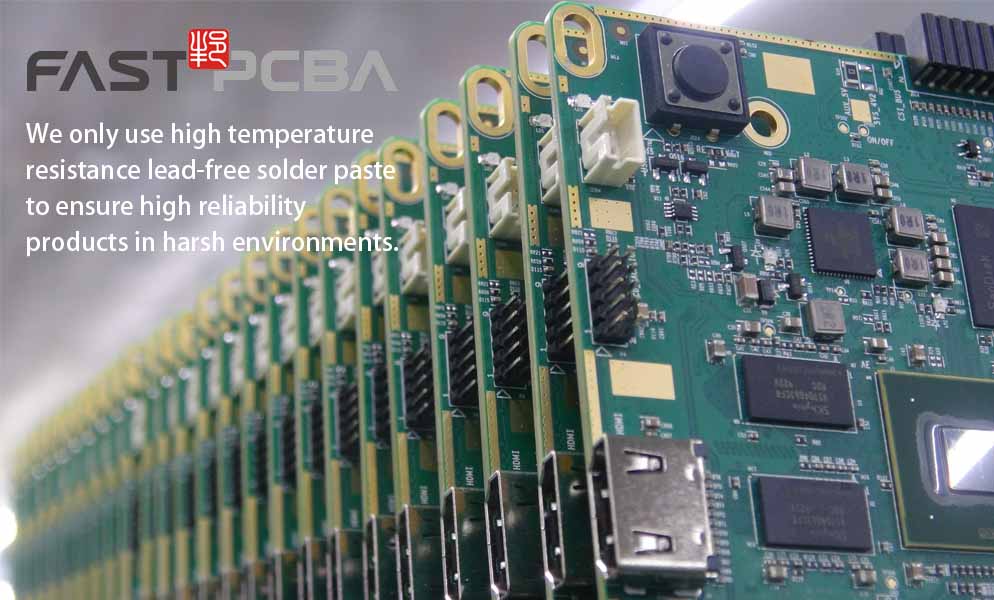About us
FASTPCBA Co.,Ltd
-
 Building 1, Senyang Electronic Technology Park, Guangming High-tech Park, Yutang Street, Guangming District, Shenzhen City.
Building 1, Senyang Electronic Technology Park, Guangming High-tech Park, Yutang Street, Guangming District, Shenzhen City.
-
 F:86-13418481618
F:86-13418481618
-
 pcba13@fastpcba.cn
pcba13@fastpcba.cn
 date:2019-11-19 13:54:13
date:2019-11-19 13:54:13
In PCB manufacturing, wave soldering machines development direction and requirements
It is widely used in PCB manufacturing wave soldering and mixing process, especially in electronic products.
1. The development direction of wave soldering machine
A. The computerization of process control greatly improves the reliability of the whole machine, and the operation and maintenance are simple, and the human-machine interface is friendly.

B. Development of environmental protection. Ultrasonic spray and nitrogen protection have emerged.
C. Development of solder peak power technology. With the deepening of theoretical research on induction electromagnetic pump technology and the improvement of application technology, induction electromagnetic pump technology will gradually replace mechanical pump technology and become the mainstream of future wave peak power technology.
D. Use the curved gradient guide rail and the variable inclination angle of the manipulator to adjust the inclination angle of the PCB into the peak, and improve the welding quality of the PCB manufacturing.
E. Inert gas (such as nitrogen) protection technology to avoid high temperature oxidation of solder.
F. Selective wave soldering machines are becoming more and more widely used.
2,The requirements of wave soldering for lead-free soldering
A. High temperature resistance and corrosion resistance, using titanium alloy steel pot or plating on the inner wall of the pot. Sn pot temperature difference is less than +2 ° C
B. Spraying the flux to control the spray width and spray amount.
C. Lengthen the length of the preheating zone to meet the requirements for slow heating. The preheating zone uses a hot air heater or infrared plus ventilation to facilitate evaporation of water vapor.
D. Reduce the distance from the preheating section to the solder pot, reduce the distance between the two peaks, and prevent excessive temperature drops from the preheating section to pre-soldering and between the two peak soldering.
E. Increase the intermediate support to prevent PCB deformation caused by high temperature.
F. Increase the cooling device to make the solder joint cool down quickly.
G. Filling with nitrogen to reduce the formation of solder slag.
H. Increase the flux recovery device to reduce pollution to equipment and the environment.
I. Take solder anti-oxidation and tin slag shunting measures.
Due to the high tin content and high temperature of lead-free solders, solder oxidation and tin slag increase are more serious. A new nozzle structure and tin slag separation design can be used to minimize the tin content in the tin slag. In addition, the flow design of the automatic accumulation of tin slag can reduce the dross floating on the peak surface, which can reduce the slag and maintenance in the PCB manufacturing process.
 Building 1, Senyang Electronic Technology Park, Guangming High-tech Park, Yutang Street, Guangming District, Shenzhen City.
Building 1, Senyang Electronic Technology Park, Guangming High-tech Park, Yutang Street, Guangming District, Shenzhen City.
 F:86-13418481618
F:86-13418481618
 pcba13@fastpcba.cn
pcba13@fastpcba.cn